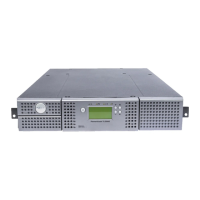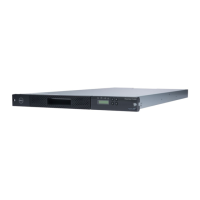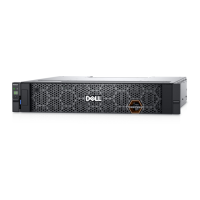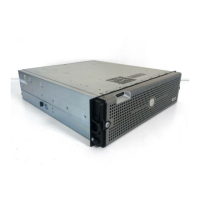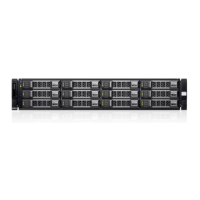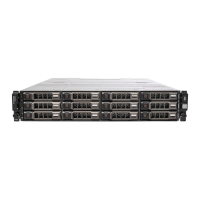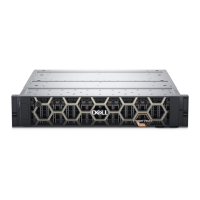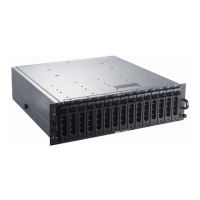Page 8
Using Linux Server
1) Edit the /etc/iscsi.conf file to add the entries below for each iSCSI target:
For example, your edited /etc/iscsi.conf file might look like this:
DiscoveryAddress=172.168.10.6
OutgoingUsername=iqn.1987-05.com.cisco:01.742b2d31b3e
OutgoingPassword=0123456789abcdef
Note: If you are configuring Mutual CHAP authentication in Linux, you must also add an
IncomingUsername= and IncomingPassword= entry after each
OutgoingPassword= entry.
The IncomingUsername is the iSCSI target name, which can be viewed in the iSCSI
bridge management interface
For example, your edited /etc/iscsi.conf file might look like this:
DiscoveryAddress=172.168.10.6
OutgoingUsername=iqn.1987-05.com.cisco:01.742b2d31b3e
OutgoingPassword=0123456789abcdef
IncomingUsername=iqn.1984-05.com.dell:powervault.6001372000f5f0e600000000463b9292
IncomingPassword=abcdef0123456789
If you are using RHEL 5 or SLES 10 SP1
1) To enable CHAP, add the following line to your /etc/iscsi/iscsid.conf file.
node.session.auth.authmethod = CHAP
2) To set a username and password for CHAP authentication of the initiator by the target(s), edit the
following lines as shown:
node.session.auth.username = <iscsi_initiator_username>
node.session.auth.password = <CHAP_initiator_password>
3) If you are using Mutual CHAP authentication, you can set the username and password for CHAP
authentication of the target(s) by the initiator by editing the following lines:
node.session.auth.username_in= <iscsi_target_username>
node.session.auth.password_in = <CHAP_target_password>
4) To set up discovery session CHAP authentication, first uncomment the following line:
discovery.sendtargets.auth.authmethod = CHAP
5) Set a username and password for a discovery session CHAP authentication of the initiator by the
target(s) by editing the following lines:
discovery.sendtargets.auth.username = <iscsi_initiator_username>
discovery.sendtargets.auth.password = <CHAP_initiator_password>
6) To set the username and password for discovery session CHAP authentication of the target(s) by
the initiator for Mutual CHAP, edit the following lines:
discovery.sendtargets.auth.username = <iscsi_target_username>
discovery.sendtargets.auth.password_in = <CHAP_target_password>
7) As a result of steps 1 through 6, the final configuration contained in the /etc/iscsi/iscsid.conf file
might look like this:
node.session.auth.authmethod = CHAP
node.session.auth.username = iqn.2005-03.com.redhat01.78b1b8cad821
node.session.auth.password = password_1
node.session.auth.username_in= iqn.1984-
05.com.dell:powervault.123456
node.session.auth.password_in = test1234567890
discovery.sendtargets.auth.authmethod = CHAP
discovery.sendtargets.auth.username = iqn.2005-
03.com.redhat01.78b1b8cad821
discovery.sendtargets.auth.password = password_1
discovery.sendtargets.auth.username = iqn.1984-
05.com.dell:powervault.123456
discovery.sendtargets.auth.password_in = test1234567890
If you are using SLES10 SP1 via the GUI
1) Select Desktop−> YaST−>iSCSI Initiator.
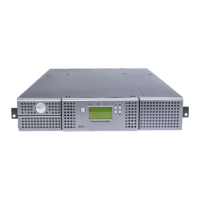
